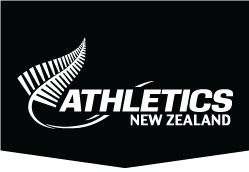News & Updates
New Ngā Puna Wai facility set to host Jennian Homes NZ Track & Field Champs

With the impressive new Ngā Puna Wai facility in Christchurch set to host the 2019 Jennian Homes New Zealand Track & Field Championships (Mar 8-10), Steve Landells reflects on the journey taken by the sport in the region over the past eight years and its hopes for the future.
When Ngā Puna Wai opened its doors for the first time last October it was impossible to calculate the tsunami of hope and optimism which swept through the Christchurch athletics community.
For more than seven years, New Zealand’s second city had been bereft of an all-weather facility after the iconic QEII Stadium was destroyed beyond repair by the February 2011 earthquake.
The stadium built to host the iconic 1974 Commonwealth Games and also venue of the country’s most high-profile international athletics meet for many years, as well as the 2011 IPC Athletics World Championships – staged just one month prior to the earthquake – was gone.
For more than 35 years it formed the heartbeat of the athletics community in Christchurch and its sudden demise inevitably impacted on track and field in the city.
Athletics Canterbury President Andrew Stark says that while there was an initial dip in the numbers of children competing in athletics following the disaster, because there was no expectation or necessity among the kids to access quality facilities, numbers quickly stabilised.
However, where the lack of all-weather facilities impacted most was with the older more serious athletes, Andrew insists.
“We noticed a real drop-off at U20 and senior level as well as masters athletes,” explains Andrew. “You can imagine, for many it was not particularly inspiring for them to run on a grass track and record a time which was perhaps a lot slower than others were running elsewhere in New Zealand.
“We noticed this most impacted upon runners and hurdlers. The throwing numbers held up quite well because a concrete circle to throw in is a concrete circle and they weren’t inconvenienced too much (by not having an all-weather track).”
Ian Thomas, who works as General Manager for Athletics Canterbury, says numbers for some senior track and field meetings in the city attracted as a few as 60 athletes prior to the opening of the new track and this unquestionably put a strain on the sport.
“Officials and volunteers had given up their time to contribute to the sport,” explains Ian. “But from a sustainability point of view we just couldn’t continue running the sport in the way we wanted with those numbers.
“Losing QEII and not having an all-weather track made it very hard to grow the sport.”
Yet despite the huge inconveniences caused by a city of more than 350,000 not having an all-weather facility, the sport has survived through some difficult years and also enjoyed its successes.
Andrew points to the fact a generation of runners, who have never known an all-weather facility in the city, have still thrived, with the likes of Nick Moulai, Mitchell Small, Tannock Blair and Charlotte Blair all emerging to win US scholarships.
Christchurch-based Athletics NZ lead coach for combined events, jumps, sprints and relays, Terry Lomax, insists the sport rallying together in the wake of the 2011 tragedy has been hugely uplifting.
“It (the earthquake and the subsequent lack of facilities) has probably made all people involved in the sport here more resilient,” explains Terry. “Christchurch Boys’ High School has a four-lane 60m straight, two-lane 100m strip plus field event facilities. People would normally have to pay to access it but immediately (after the earthquake) all athletes were allowed to utilise the facility for free. This was a great example of increased co-operation. Over and above the fact that we now have a new facility, this has been the biggest positive to come out of the sport in Christchurch over the last seven years or so.”
Perhaps counter-intuitively Terry insists the sport’s elite athletes in Canterbury have continued to perform. Led by the like of World champion shot putter Tom Walsh and supported by Olympic 800m athlete Angie Petty and multiple-winning national 100m hurdles champion Fiona Morrison, Canterbury enjoyed one of the finest national championship in history in 2017.
However, what has proved draining for many athletes based in the Christchurch region is the fact the nearest competition site and all-weather venue is some two hours away in Timaru.
“I think this is the factor which has worn people down more than anything,” adds Terry. “It has been tough as a 400m sprinter, 400m hurdler or steeplechaser to drive regularly down to Timaru for a training session.”
Thankfully, Nga Puna Wai finally opened its doors to the track and field facility six months ago and the impact was immediate.
The first senior interclub meet attracted this season around 250 athletes compared to the opening day last season, where only 65 attended.
The novelty factor of the new all-weather facility has unquestionably piqued interest and enthusiasm has been sustained. The New Zealand Combined Events Championships were staged at the venue and attracted for one of the highest number of entries for many years. A recently organised Sprints Festival at Ngā Puni Wai was similarly successful.
As general manager it is Ian’s role to capitalise in this bump in interest and he has a clear vision for how he hopes to make the most of the opportunity.
“It is about laying down the foundations of the sport and making sure we have everything in place,” he explains. “We now have the chance to grow the sport and develop the next Tom Walsh or Angie Petty. We have some phenomenal talent we just need to make sure we create the right pathways for our athletes into the high performance end of the sport.
“My hope is that Canterbury provide double digit numbers for the New Zealand track and field team at the next (2022) Commonwealth Games in Birmingham.”
Andrew believes that in order to make the most of the new facility, it required a more professional approach and he has led change over the past couple of years. One of the first building blocks in this process was achieved by finding the funding to employ a general manager – in the form of Ian Thomas. The hope is that over time more paid employees will join him and he has some innovative plans about how better to utilise the facility.
“We are looking at introducing mid-week community activities,” explains Andrew.
“We have discussed with Hamish (Grey, the former CEO of Athletics NZ) the concept of creating a ‘community membership option’ in Canterbury. This might appeal to the hockey, rugby or rugby league player who does not want to join a track and field club in the summer. They might want to train at Nga Puna Wai. We want to offer them the opportunity the compete up to six times a season without having to be a full-fledged club member. It’s all about increasing participation numbers and giving people an ‘experience’ of what track & field is all about. That may encourage them to join a club in the future, particularly if they want to compete at our championships or nationals.
“We could also put on masters activities during the week to attract people to stay fit and a have a go.”
The upturn in numbers does however present its challenges. Terry talks of “the bubble” effect created by younger athletes opting to participate for longer in the sport because of the attraction of the all-weather facility.
However, he is wary of this generating extra pressure on the existing coaches in the city.
Ian is excited at the regular involvement in athletics of more than 450 children in Christchurch but insists meeting the demand for officials is a challenge.
Yet with the facility now in place there is little question the New Zealand’s second city is in the best place for many years to successfully develop and grow the sport.
“It is about growing the numbers, increasing retention and lifting the profile of the sport,” explains Terry. “We have now the best competition venue in the country and by staging events such as nationals we are once more back on the athletics map.”
